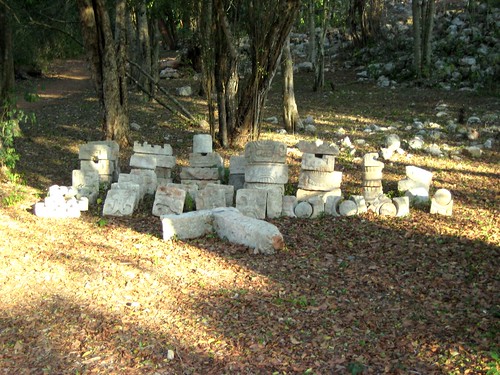More running around the Yucatan. This stop takes me to the lesser known but very impressive site at Kabah. In Mayan Kabah means "strong hand."
Here's a shot as you enter the main square, which can be seen from the highway-
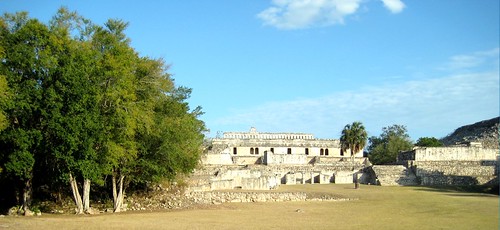
Taking a right you find a phallic carving, missing it's head-
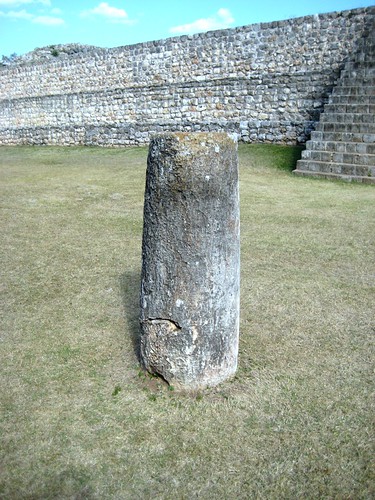
Little farther and you find the missing head. I know many of you think a dick head looks like that co-worker you can't stand. But no this is what a dick head looks like-
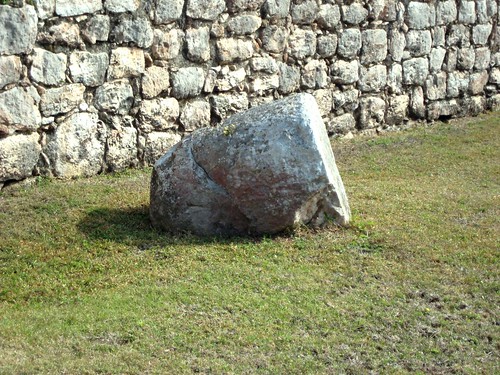
Up a few steps and this guys looking at you. His name is Chac, the Mayan God of rain-
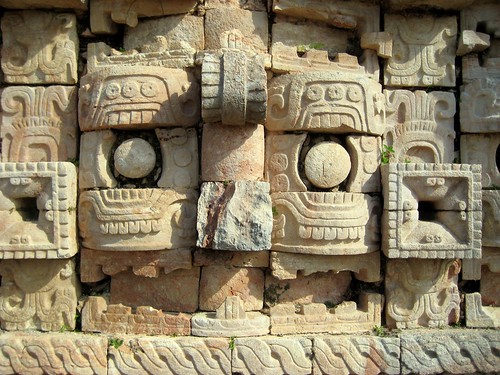
And he has friends.
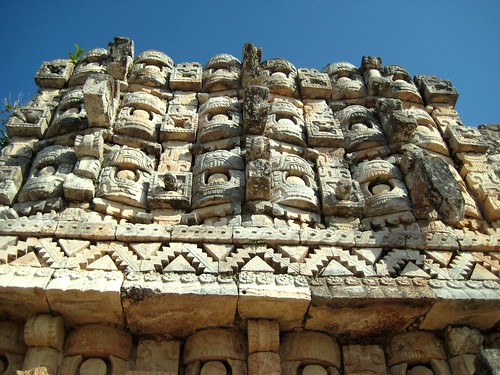
He has lots of friends-

Each mask of Chac is made up of some 19 separate stone carved pieces. Each piece is made buy a separate craftsman, once he finished the piece he made his mark on the back and it's then added to the mask-
Around the back and you'll find a couple rulers. Thier hands (hands now missing) are extended with offerings to the Gods-
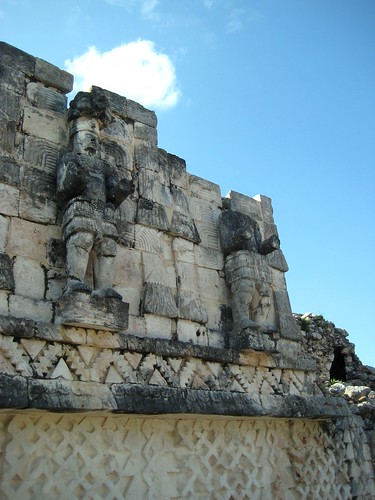
Under and to the left of the rulers is a doorway with very detailed carvings on each side. These carvings depict battle scenes with warriors in full battle dress-
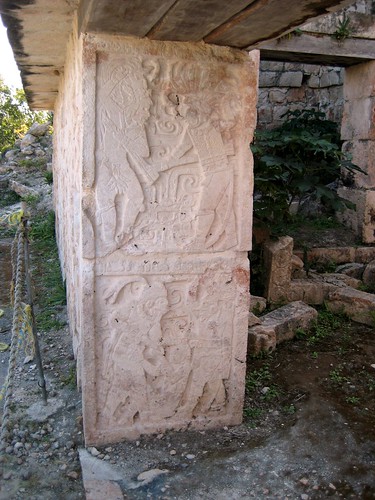
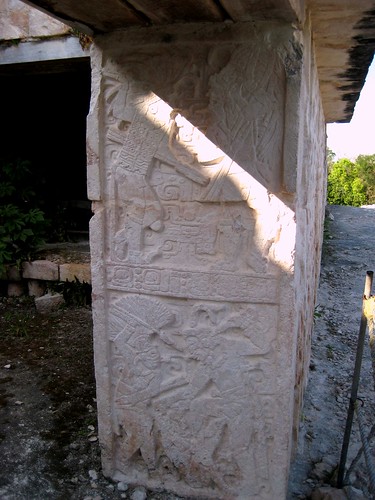
The left of there is the upper temple. At the very top you'll see what left, one, spiral design. This spiral is the Mayan image for strong winds. It doesn't show well in this photo but it's very similar to the current symbol for hurricanes-
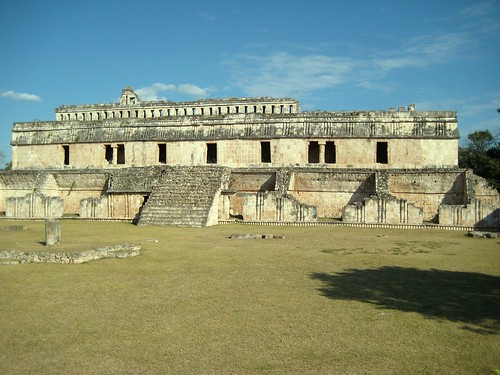
Standing in the courtyard looking right you'll see the south temple. The tree just to the right is an orange tree with very sweet fruit easily reached-
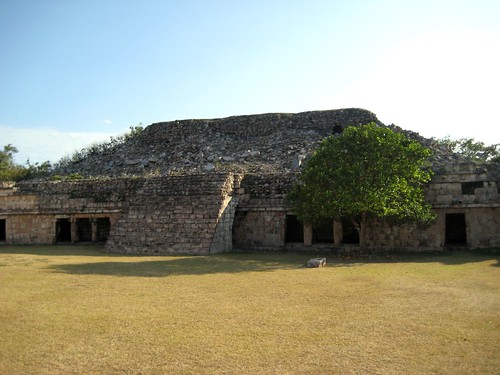
On the way out you pass the restrooms. Behind them you'll find two older carvings. The top one here is a skeleton with a penis. It's meant to represent the duality of life and death in the Mayan world. The bottom one is of a shaman holding a snake, it wraps around neck and hangs over his shoulder. Laying in front of him is the hooked nose of the god Chac mool. These items are being prepared for shipment to Monterey, Mexico for an exhibit -
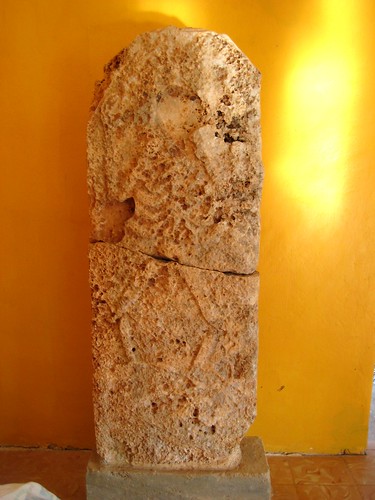
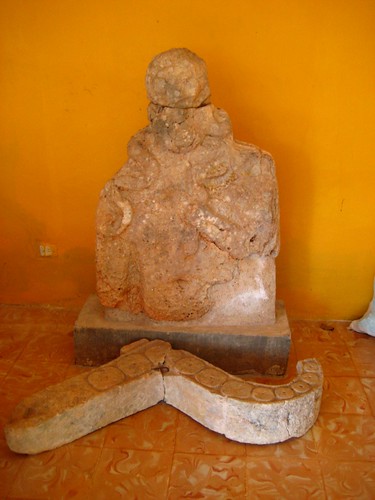
Here's a gathering of pieces that, as near as I can tell, make up two Chac masks. They too are being prepared for shipment to Monterey. Looking at these individual pieces and thinking of what it takes to carve them with the tools that would have been available at the time I believe I know why the Mayan named this place for "strong hands" or Kabah-
